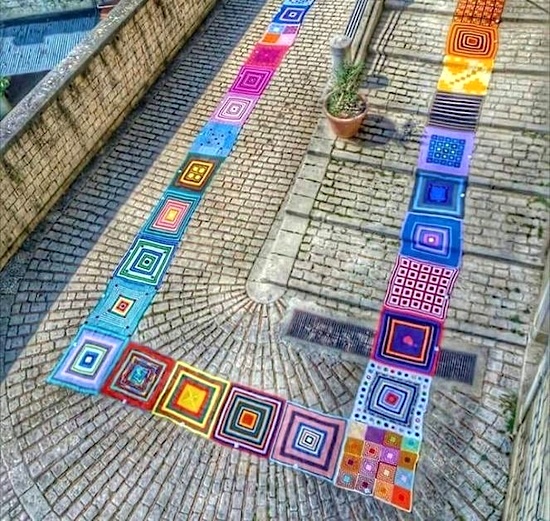Trivento is little village in which in a short time has become the ‘world’s capital of crochet’. Find out how this social and artistic project was born and how it has connected women of all the ages to decorate and color all the corners of the village.
Trivento is a village in Molise with 4650 inhabitants in the province of Campobasso. Since the 2018 it’s known also as ‘the city of crochet’ thanks to the initiative of a citizen Lucia Santorelli who had the brilliant idea to cover with a long and colorful cloak (made with the technique of crochet) the 365 steps of the stairway of San Nicola which conducts to the higher part of the village and which links the square to the city center. The colorful carpet, entirely crafted by hand from the work of the women of crochet, was declared the longest crochet carpet of the world.
At Trivento the art of crochet has linked women of all the ages to decorate the city; this multitude of threads have joined the entire population. Gradually this project which has the aim to link with a thread all the citizenship, has moved on until to make Trivento the mundial capital of crochet. Following this, was born the highest crochet Christmas tree of the world. Exposed in the Fontana’s square, the tree was composed by more than 1300 small granny square of wool from all Italy. The technique of granny square, literally ‘the square of grandmother’, is a technique of crochet used to produce perfect squares made by crochet working from the center to the external part in a circular way. The squares are then combined until to create a mosaic of real creative artworks.
In the month of August many artists from the near Abruzzo but also from Germany, Belgium, Netherlands and even from the far Mexico, have been hosted in Trivento and invited to make over seventy crochet artworks to decorate the path which started from the Fontana’s square to the Cattedrale’s square, in the heart of the city center.
The beauty of these works of art is not only in the colours and in the technique, but in the love that women feel to realize them. In these artworks is transmitted an authenticity which represents a context where the rural traditions are still very important and there is a strong desire of the community to preserve and communicate them.
Rosa Sallustio

